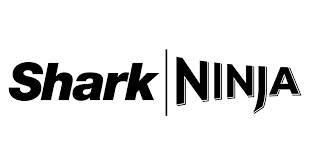An autonomous robot is a robot that acts without recourse to human control. The first autonomous robots environment were known as Elmer and Elsie, which were constructed in the late 1940s by W. Grey Walter. They were the first robots in history that were programmed to "think" the way biological brains do and meant to have free will. Elmer and Elsie were often labeled as tortoises because of how they were shaped and the manner in which they moved. They were capable of phototaxis which is the movement that occurs in response to light stimulus.

A vacuum cleaner, also known simply as a vacuum is a device that causes suction in order to remove dirt from floors, upholstery, draperies, and other surfaces. It is generally electrically driven.
BEAM robotics is a style of robotics that primarily uses simple analogue circuits, such as comparators, instead of a microprocessor in order to produce an unusually simple design. While not as flexible as microprocessor based robotics, BEAM robotics can be robust and efficient in performing the task for which it was designed.

Cleaning is the process of removing unwanted substances, such as dirt, infectious agents, and other impurities, from an object or environment. Cleaning is often performed for aesthetic, hygienic, functional, environmental, or safety purposes. Cleaning occurs in many different contexts, and uses many different methods. Several occupations are devoted to cleaning.

Roomba is a series of autonomous robotic vacuum cleaners made by the company iRobot. Introduced in September 2002, they have a set of sensors that enable them to navigate the floor area of a home. These sensors can detect the presence of obstacles, particularly dirty spots on the floor, and steep drops.
Robotic mapping is a discipline related to computer vision and cartography. The goal for an autonomous robot is to be able to construct a map or floor plan and to localize itself and its recharging bases or beacons in it. Robotic mapping is that branch which deals with the study and application of ability to localize itself in a map / plan and sometimes to construct the map or floor plan by the autonomous robot.

iRobot Corporation is an American technology company that designs and builds consumer robots. It was founded in 1990 by three members of MIT's Artificial Intelligence Lab, who designed robots for space exploration and military defense. The company's products include a range of autonomous home vacuum cleaners (Roomba), floor moppers (Braava), and other autonomous cleaning devices.
WowWee Group Limited, is a privately owned, Hong Kong-based Canadian consumer technology company.

Scooba was a floor-scrubbing robot made by iRobot. It was released in limited numbers in December 2005 for the Christmas season, with full production starting in early 2006. The company introduced a lower-priced version, the Scooba 5800, in the second half of 2006. It introduced a new Scooba 450 at CES 2014 in January 2014.

Carpet cleaning is performed to remove stains, dirt, and allergens from carpets. Common methods include hot water extraction, dry-cleaning, and vacuuming.

A robotic vacuum cleaner, sometimes called a robovac or a roomba as a generic trademark, is an autonomous robotic vacuum cleaner which has a limited vacuum floor cleaning system combined with sensors and robotic drives with programmable controllers and cleaning routines. Early designs included manual operation via remote control and a "self-drive" mode which allowed the machine to clean autonomously.

A domestic robot is a type of service robot, an autonomous robot that is primarily used for household chores, but may also be used for education, entertainment or therapy. While most domestic robots are simplistic, some are connected to Wi-Fi home networks or smart environments and are autonomous to a high degree. There were an estimated 16.3 million service robots in 2018.

Brainlab is a privately held German medical technology company headquartered in Munich, Bavaria. Brainlab develops software and hardware for radiotherapy and radiosurgery, and the surgical fields of neurosurgery, ENT and craniomaxillofacial, spine surgery, and traumatic interventions. Their products focus on image-guided surgery and radiosurgery, digital operating room integration technologies, and cloud-based data sharing.
Ecovacs Robotics is a Chinese technology company. It is best known for developing in-home robotic appliances. The company was founded in 1998 by Qian Dongqi and is headquartered in Suzhou, China. According to Global Asia, Ecovacs Robotics had more than 60% of the Chinese market for robots by 2013. In 2023, Nikkei Asia had reported that the market capitalisation of Ecovacs Robotics has grown to near 6.38 billion dollars, which is "roughly 5 times" that of the market capitalisation of rivalling US based iRobot, who manufactures the Roomba.
Xiaomi Smart Home Products are products released by third-party manufacturers who have partnered with Xiaomi. These products are managed by Xiaomi Home app.

Roborock is a Chinese consumer goods company known for its robotic sweeping and mopping devices and handheld cordless stick vacuums. Xiaomi played a key role in the company's founding.

SharkNinja is a global product design and technology company based in Needham, Massachusetts.
Dreame Technology, with the full name Dreame Technology Co., Ltd., also known as Dreametech, is a Chinese manufacturer of household appliances, specializing in making vacuums. Founded by Yu Hao in 2017, the company's main products are cleaning and personal care appliances, including cordless vacuums, scrubbers, hairdryers, and robot vacuum and mops. In addition, it owns and operates an app called Dreamehome.












